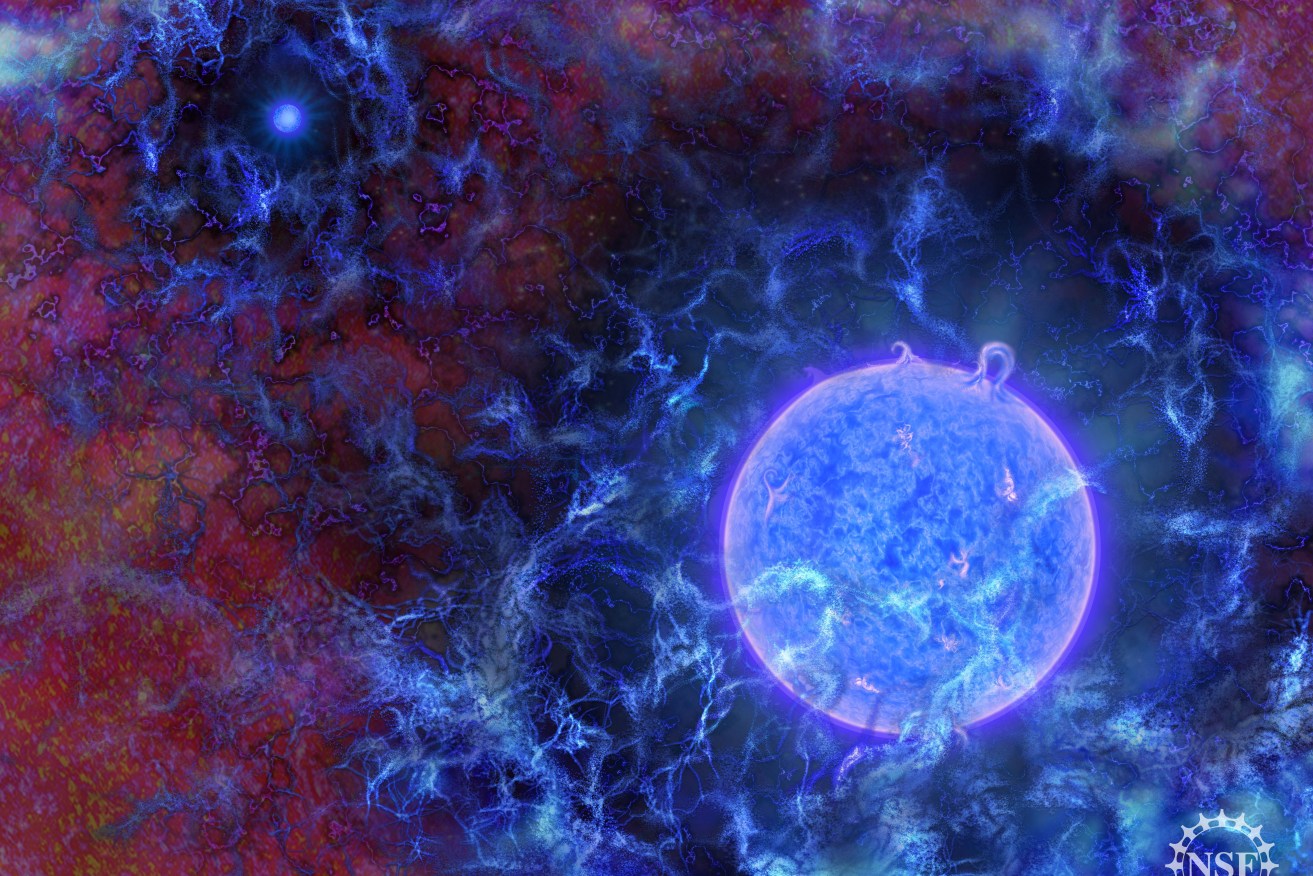Astronomers glimpse universe’s cosmic dawn
After the Big Bang, it was dark and cold. And then there was light. Now, for the first time, astronomers have glimpsed that dawn of the universe 13.6 billion years ago when the earliest stars were turning on the light in the cosmic darkness.

A rendering of how the first stars in the universe might have looked. Image: N.R.Fuller/National Science Foundation via AP
And if that’s not enough, they may have detected mysterious dark matter at work, too.
The glimpse consisted of a faint radio signal from deep space, picked up by an antenna that is slightly bigger than a refrigerator but in certain ways can go back much farther in time and distance than the celebrated, multibillion-dollar Hubble Space Telescope.
Judd Bowman of Arizona State University, lead author of a study published on Wednesday in the journal, Nature, said the signal came from the very first objects in the universe as it was emerging out of darkness 180 million years after the Big Bang.
Seeing the universe just lighting up, even though it was only a faint signal, is even more important than the Big Bang because “we are made of star stuff and so we are glimpsing at our origin,” said astronomer Richard Ellis, who was not involved in the project.
The signal showed unexpectedly cold temperatures and an unusually pronounced wave. When astronomers tried to figure out why, the best explanation was that elusive dark matter may have been at work.
If verified, that would be the first confirmation of its kind of dark matter, which is a substantial part of the universe that scientists have been searching for over decades.
This is nothing that astronomers could actually see. In fact, it’s all indirect, based on changes in the wavelengths produced by radio signals.
The early universe was black and cold, filled with just hydrogen and helium. Once stars formed, they emitted ultraviolet light into the dark areas between them. That ultraviolet light changes the energy signature of hydrogen atoms, Bowman said.
Astronomers looked at a specific wavelength. If there were stars and ultraviolet light, they would see one signature. If there were no stars, they would see another. They saw a clear but faint signal showing there were stars, probably many of them, Bowman said.
So far, the scientists know little about these early stars. They were probably hotter and simpler than modern stars, Ellis and Bowman said.
But now that astronomers know where and how to look, others will confirm this and learn more, Bowman said.
The research does not establish exactly when these stars turned on, except that at 180 million years after the Big Bang, they were on. Scientists had come up with many different time periods for when the first stars switched on, and 180 million years fits with current theory, said Ellis, a professor at University College London.
What seems likely is dark matter – which scientists have never seen interacting with anything – may be cooling that hydrogen. Dark matter makes up about 27 per cent of the universe, but scientists little about it except that it’s not made of normal matter particles called baryons.
Scientists have known dark matter exists, indirectly, through measurements based on gravity. If this interpretation of the data is correct, it would be the first confirmation of dark matter outside of gravity calculations.
– AP




